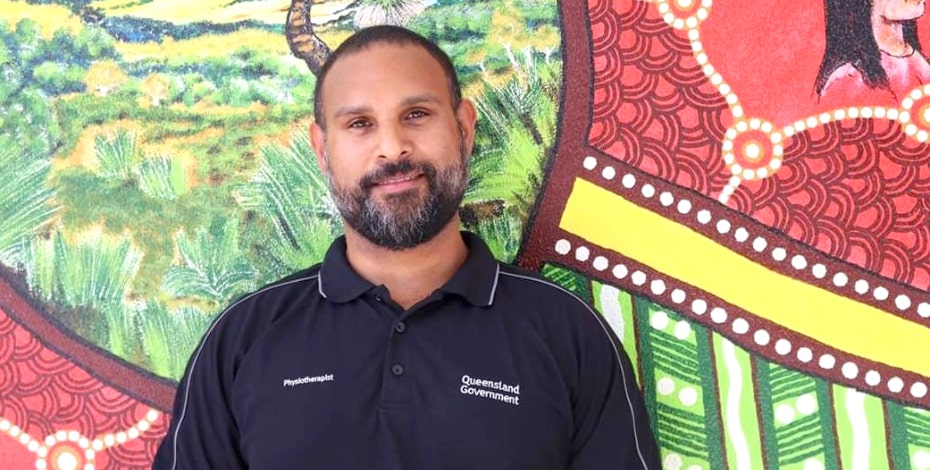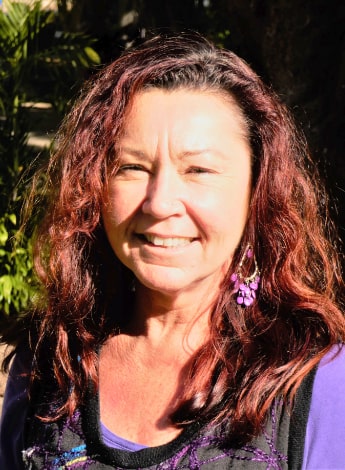
Planning to take action

Building strong relationships is at the core of any Reconciliation Action Plan. Nell Angus and Carl Francia elucidate the power of collaboration to create Reconciliation across the country.
‘Aboriginal and Torres Strait Islander people don’t need to reconcile with themselves.
It’s actually the non-Indigenous people who have to do the heavy lifting,’ says Nell Angus.
‘We have to educate ourselves.
We have to think about power and authority, how decisions are made and the governance of our country.
We need to get more non-Indigenous people involved—whether they are new to Australia, have come seven generations ago or arrived a couple of generations ago, it doesn’t matter.
They are still a non-Indigenous person living in Australia, which encompasses the traditional lands of many different Aboriginal and Torres Strait Islander Peoples.’
Nell Angus is a non-Indigenous woman born on Gurnai/Kurnai lands (Gippsland).
A former dietitian, she worked on a family nutrition project with Aboriginal and Torres Strait Islander communities before moving into service improvement.
With a master’s degree in public health, specialising in Indigenous health, she joined the Office of the Pro-Vice-Chancellor (Indigenous Engagement) at the University of Queensland’s (UQ) in 2017 to develop the university’s first Reconciliation Action Plan (RAP).
‘I have been working on Reconciliation as long as I can remember,’ says Nell.
‘All RAPs are about building relationships, building respect and creating opportunities in the context of a particular organisation to address inequities, but also to enhance Aboriginal and Torres Strait Islander excellence.’
Carl Francia, APAM, a Saibai Koedal clansman of the Torres Strait Islands, works as a staff physiotherapist at The Prince Charles Hospital in Queensland and is an associate lecturer at the School of Health and Rehabilitation Sciences at UQ.
‘To me,’ says Carl, ‘Reconciliation is about telling the truth about our history, about understanding and valuing each other’s cultures and addressing inequities to move forward and write the next chapter together.
For me, a RAP intends to enshrine these visions.’
Reconciliation Australia describes a RAP as a strategic document that supports an organisation’s business plans to develop Reconciliation.
As Carl explains, it includes practical actions that will drive an organisation’s contribution to Reconciliation both internally and in the communities in which it operates, to make an impact within its sphere of influence.
‘As more and more organisations adopt RAPs, imagine a sphere spreading out across its influence and those spheres overlapping.
When Reconciliation is all over the country and those spheres overlap, those are opportunities to work together and collaborate.
Not work in our silos, but work together to make impacts across organisations and across sectors.’

Nell Angus says it's up to non-Indigenous people to do the 'heavy lifting' when it comes to Reconciliation.
In December 2018, UQ launched its first RAP.
‘We created our RAP to drive coherent change across the university,’ says Nell.
‘Some of the things people were doing well we replicated across different schools or faculties and adapted to their unique context, without reinventing the wheel.
‘RAPs come with a series of mandatory actions in relation to events, community engagement, cultural protocols, procurement and employment.
Our RAP includes additional actions to do with Aboriginal and Torres Strait Islander students, research, teaching and learning as well as looking at how to embed Aboriginal and Torres Strait Islander knowledge and voices into UQ’s governance.’
There are multiple ways of developing a RAP.
UQ chose a conversation leadership style that enables dialogue to drive outcomes of the interaction or discussion, but also enables a collaborative way of developing the actions and deliverables.
One unique aspect they incorporated into one of their actions is the UQ RAP merchandise.
‘We commissioned Casey Coolwell and Kyra Mancktelow, two Quandamooka artists who created A Guidance Through Time,’ says Nell.
‘As part of that, we have a style guide for physical and digital collateral.
With the physical collateral, we decided to sell it both internally and externally through UQ Shop.
Any profits from the artwork go back into Aboriginal and Torres Strait Islander scholarships.
‘We also engaged an Aboriginal and Torres Strait Islander supplier to create the merchandise.
That way we’re generating economic outcomes as well as scholarships to support students to go through university.
We had a Create Change matched funding scheme when we set up the merchandise range where the profits of the merchandise were matched by UQ in 2020 and 2021.
In 2020, with that funding scheme, we raised $50,000.’
Carl was involved in the development of The Prince Charles Hospital’s RAP.
‘I’ve seen firsthand the mechanics and the impact that a RAP can have.
The RAP is a fantastic guide and when you can engage with that at a departmental level, you can really tease out your own specific deliverables,’ he says.
‘From our larger hospital RAP, I established a physiotherapy department Reconciliation and Health Equity working group.
One of its goals was to help the department engage with the larger hospital RAP to develop our own specific deliverables.
That has now been embedded within the department and it has continued without me.

Carl Francia with a water bottle, part of the UQ RAP merchandise.
That’s exactly what we want—taking the goodwill and intentions from your workforce, not just from First Nations people but also non-Indigenous allies, and turning that into practical action.
I’m a big fan of the RAP.
‘When I arrived on the scene at the UQ School of Health and Rehabilitation Sciences in February 2021, I saw there was an interest in engaging in Reconciliation among the school and I wanted to be involved and help support that.’
In May this year, the school held its first National Reconciliation Week discussion panel.
Panel members included Professor Sandy Brauer (head of school), Kathryn Martin (associate lecturer in occupational therapy), Jodie Booth (clinical education liaison manager), Carl and Dr Jenny Setchell (senior research fellow in physiotherapy), who emceed.
The event included school staff and student leaders from each discipline, including physiotherapy, occupational therapy, speech pathology and audiology.
Afterwards, attendees volunteered specific actions for the school to take towards Reconciliation.
The highlight for Carl was a comment from one of the representatives of the Queensland Physiotherapy Student Association and third-year UQ physiotherapy student, Akshay Prakash.
He told the audience of a recent Queensland Physiotherapy Student Association membership trip accompanying medical students on a visit to a rural Aboriginal community in Queensland.
The aim of the trip was to build relationships, discuss health priorities with community members and broaden student experience working with community.
With 60 Queensland Physiotherapy Student Association members applying for 40 available positions, this demonstrated the unmet demand for more opportunities for physiotherapy students to visit and perform clinical placements in Aboriginal and Torres Strait Islander communities.
Says Carl, ‘This was a great opportunity for those present, including the head of school and the clinical education liaison managers, to hear firsthand a great example of student leadership—the passion, the initiative, the ability to mobilise modest student resources and a desire to engage with Aboriginal and Torres Strait Islander communities as student clinicians.
Preparing the next generation of physiotherapists for practice is a vested interest, not only for the university sector, but for peak bodies like the APA.
I think it’s important that we listen and learn from this example.’
There is power and possibility when organisations create their own RAPs.
As Nell says, ‘What makes us uniquely Australian is our shared history and the ongoing presence of Aboriginal and Torres Strait Islander peoples.
Country wouldn’t be here without them.
This wouldn’t be the resource-rich country it is, and I don’t just mean money resource-rich—Country that we all live on, acknowledging that sovereignty was never ceded.
It’s a tricky position for us to be in and make progress, but I really believe that by building strong relationships and rebalancing power through enacting the Uluru Statement from the Heart calls to action, we can do it, albeit slowly.’
Check out the UQ Shop RAP merchandise here and tune into Carl’s episode of The Deadly Physios here.
© Copyright 2024 by Australian Physiotherapy Association. All rights reserved.





